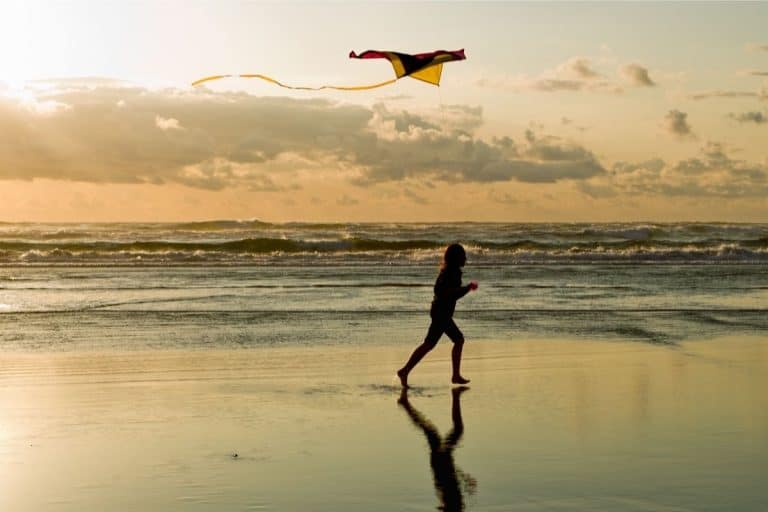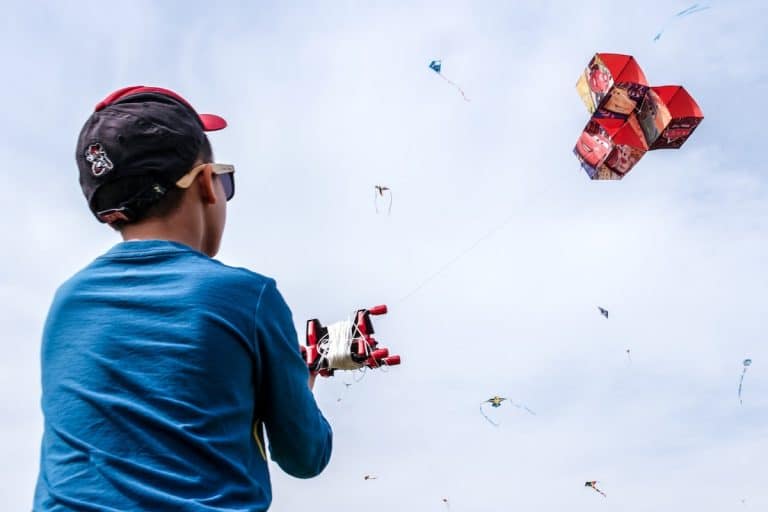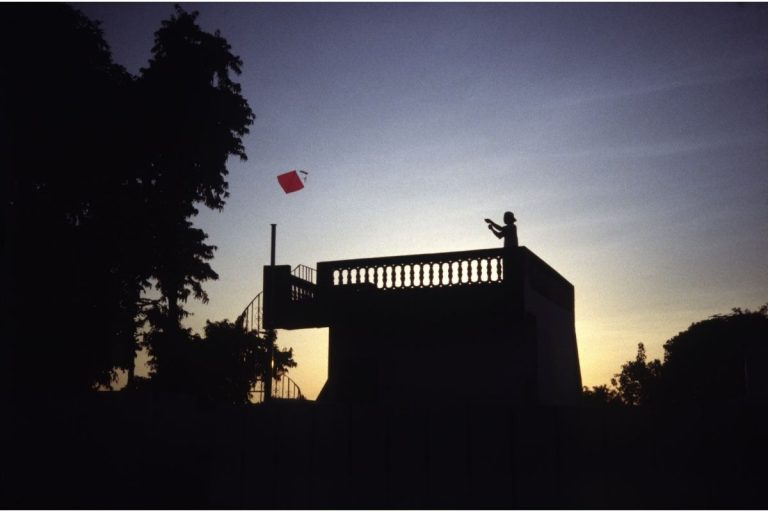4 Reasons Why Kite Flying Can Be Dangerous
Kite flying has been around for centuries, and to this day, many children and adults still love flying them. Some countries host annual kite-flying events, and local communities worldwide participate in their celebrations. Like any other sport, it can be dangerous when not following suggested guidelines to keep you safe. Kite flying has been incorporated into many extreme sports, which has added to why kite flying can be dangerous.
Kite flying can be dangerous due to the following 4 reasons:
- Not adhering to general safety guidelines.
- Flying kites in unsuitable weather conditions.
- The use of Manja lines when kite fighting.
- Certain types of kiting sports are dangerous, especially without proper training.
Kite flying is an ancient tradition. Some claim that the Chinese started flying kites in the 5th century BC. Others claim that the first kites were flown in Indonesia, where a cave painting depicted kites being flown, dated 9000 years BC. Whichever version is accurate does not matter, as today the whole world still flies kites, and the different variations are too many to mention. Many nations have designed unique kites over the years that they still fly today.
4 Reasons That Make Kite Flying Dangerous
When people think about kite flying, they tend to envision a beautiful, lightweight structure that flies in the wind being controlled by a cotton string. Kite flying has evolved so that having a kite in the air comes with specific safety guidelines that need to be adhered to and followed. It can be a dangerous exercise when partaking in some more aggressive forms of kite flying. Injuries can and do occur quite frequently.
1) Not Adhering To General Safety Guidelines
When going out to do some kite flying, you could follow a few important safety guidelines to keep yourself safe. Not following them could lead to injury and even death in worst-case scenarios. Flying a kite should always be done in open and safe areas.
Some general safety guidelines are:
Never Fly Near Powerlines
Strings are made out of various materials, and some conduct electricity. Flying near powerlines can lead to power shortages in the event of your kite getting entangled in these lines. There have been cases where people got electrocuted when trying to retrieve their kites from said powerlines.
A powerline usually has more than 7000 volts running through them, and irrespective of the line you are using, the electricity can flow down the line, and you will not survive such a powerful surge.
Never Fly Near Airports
Kites can reach high distances, depending on the length of the line, so flying near airports could be dangerous to small aircraft or helicopters using the facilities. Anything that could attach itself to your kite in the air holds some form of danger for you, the kite flyer, and the moving object flying through it.
Never Fly Next To A Busy Road
When it comes to your children flying their kites, it is best to do it in open and safe areas. Kids get engrossed with the flight of their kites that they lose their sense of awareness when it comes to what is going on around them.
Many injuries have occurred when people fly their kites next to busy roads and wander into the roads trying to recover the flight path of their kite, or even worse, the kite distracts a motorist, which could lead to severe accidents. Kites landing on busy freeways could damage vehicles and cause accidents!
Never Fly Your Kite Over Or Near People
Some kites can reach speeds over 80 mph, and a kite crashing into a person could do some serious damage. Never fly your kite over people or close to them; instead, instruct spectators to move in behind you (opposite to which way the wind is blowing). When operating a kite, the string will usually be taut, and any line put under pressure and moving at speed can cause bruises, cuts, and burns when coming into contact with human skin.
Never Tie The Kite Line To Your Body
There is no reason for you ever to tie your kite line around your body. Instead, stake the line in the ground and safely control it with the added support. Serious injuries may occur when kite flyers tie themselves to a moving kite, especially when larger kites are used.
Be extra cautious when engaging in power or traction kiting, making sure that the use of the harness will be under control at all times. Ensure that if you are attached to your kite, there is a quick release system in place and that it is in working order.
Protect Your Hands
Wearing leather gloves when flying mid-sized to large kites is always a good idea. The bigger and more potent the kite, the more intense the controlling of the line will be. Ensure your hands are protected from abrasions and kite lines cutting into your hand by covering them up.
Protect Yourself From The Sun
Kite flying is primarily an outdoor exercise, and besides the apparent precautions mentioned above, people tend to forget to protect themselves from the sun’s harmful UV rays. When you are going out for a flying session, and it will be for a couple of hours or more, remember to use sunblock, wear a hat, and put on sunglasses, especially when taking your younger children with you.
Be Fully Aware Of Your Surroundings
It is a good idea to get to know your surroundings before you start flying your kite. Scan, and walk through the planned flying area, looking for holes, drop-offs, obstacles, open man-holes, protruding rocks, and so forth. Be mindful of other people, animals, and things like cooler boxes, chairs, and kite bags.
A thorough investigation into the lay of the land could prevent people from falling over things, into holes, and off cliffs.
2) Flying Kites In Unsuitable Weather Conditions
All kites love the wind; it’s what makes them come alive and dance in the sky. Our job as kite flyers is to assess the weather conditions, making sure it’s safe to let them roam free. Kite flying can be hazardous when we don’t respect mother nature.
Dangerous Weather Conditions
Experienced kite flyers do their homework regarding the weather conditions and the possibility of the weather changing before they head off to fly a kite. What looks like a perfect day for flying could change in a blink of an eye, exposing you to dangerous conditions quickly. Following weather forecasts and downloading weather and wind apps on your phone will help to assess situations before you are actually in the middle of one.
Wind Speed
An average wind of between 4-10 miles per hour is considered an ideal wind speed to fly a kite. More experienced kite flyers have no problem flying their kites in winds of 11-25 miles per hour. When you consider that some kites are manufactured to operate in more potent than typical winds, you will notice that wind speed plays a massive role when flying a kite.
Vented sport kites and small power foils will need a wind speed ranging between 25-31 miles per hour to operate at their peak. Many specialized kites do well in 19-24 miles per hour winds. Conveyances pulled by kites and kite buggies can handle anything from 41-50+ miles per hour.
The wind speed that you can fly your kite in depends on the kite’s specific suggested wind speed. Flying it in stronger winds than suggested may lead to your kite being destroyed. Flying power and traction kites in too strong winds are considered extremely dangerous, as they physically lift you from the ground, and the landing is usually not soft. Sport and stunt kites are fast-flying kites. Being hit by one of them due to unmanageable wind speeds will cause injury.
A windy day can turn into a stormy day quite quickly. Gusty wind speeds increase the danger of kites. Being aware of the conditions at all times is be a safety measure that is easy to employ.
Thunderstorms
This one is pretty straightforward. Don’t put a kite up in a thunderstorm, and if your kite is up, take it down as soon as you see any evidence of a thunderstorm developing. According to studies, lightning striking a kite sends electrical currents down the string and into the ground. If people were to stand close to that spot where the currents enter the earth, it could kill them! If you want to be a lightning rod and be killed doing what you love, then keep that kite in the air.
Thunderstorms are terrific friends with strong winds and heavy rain. It is never a good idea to fly your kite while it’s wet and slippery. It is a recipe for disaster. Flying in dry conditions is challenging in itself. Imagine flying a kite on an ice rink. It’s dangerous, so rather wait until the storm has cleared up.
3) Using Manja Lines When Kite Fighting
Kite fighting is a popular sport practiced in countries like India, Pakistan, Chile, Brazil, Thailand, and Vietnam, to name a few. Traditionally the kites flown during these kite fighting festivals are those of single-line flat kites. The kites are controlled with line tension only.
Kite fighters often use Manja lines, which are glass-coated cotton strands used together with rice glue. In recent years, some fighters have started using synthetic lines coated with various abrasives; some cultures even use lines with metal knives attached to them to hook and eventually cut the opponent’s line.
In countries like India, Pakistan, Brazil, and Chile, there have been numerous reported accidents. A couple of motorcycle drivers have lost their lives, driving into taut Manja lines. Being cut with these abrasive lines is a common occurrence during these festivals.
Some countries like Egypt have even gone as far as banning kite flying as of July 2020. The Supreme Court of Pakistan have issued a ban on the manufacturing of kites as far back as 2005. Due to injuries that are still occurring due to kite fighting and flying kites from rooftops, police have started to use drones to capture the lawbreakers.
Since the beginning of April 2020, two people have died in the city of Kasur, in the Pakistani province of Punjab. A 12-year-old boy was busy flying a kite on the roof of his house when he slipped and suffered a severe head injury. A father of four, Muhammad Asif, died from an electric shock received from a kite’s metal string entangled with a high-voltage cable.
4) Certain Types Of Kiting Sports Are Dangerous, Especially Without Proper Training!
Kites have evolved over the years to be more powerful when used in conjunction with extreme sports. These power kites, or traction kites, are typically made out of parafoils. They are designed to pull in-line skaters, wakeboarders, skateboarders, snowboarders, and even three-wheeled vehicles called kite buggies (can reach speeds up to 70 mph). And then there are the human lifting kites (they are used to lift humans in the air).
So, if some of these sports and practices sound dangerous, it’s because they are!
Let me list some of the dangers that can happen when you participate in a well-known action sport called kitesurfing:
Kite Surfing
Kite surfing as a sport has taken off in recent years. Most scenarios that I will list have to do with the faulty equipment used and being a beginner to the sport. However, injuries and worst-case scenarios happen to the most experienced kite surfers as we deal with mother nature.
The Kite Is Overpowered
- It happens when your kite is too big for the wind and drags you out of control.
- Dangerous because you could get dragged out to sea if this happens.
- You are getting dragged into an object because you aren’t able to release the kite.
The Kite Is Underpowered
- It happens when your kite is too small for the current wind, and you cannot ride upwind.
- Dangerous because you cannot get the kite up into the air, making you drift to an unsafe zone (a downwind area with big rocks or a strong current).
Failed Launch Or Landing
- It happens when you launch your kite straight into the power zone, usually due to a strong wind.
- Dangerous because if you cannot lower your kite at the edge of the power zone window, you could be dragged or lifted inland, where you could be smashed into a building or dumped onto a busy road. There could be severe injuries when this happens to you.
Jumping Injuries
- It happens when you make a jump, and you land in shallow water (usually when you are new to the sport and still learning).
- Dangerous because you could injure your feet, knees, and back.
- Getting hit by another kitesurfer could also lead to painful injuries.
- Not being aware that the tides are changing (low-water tides), making sandbanks and rocky parts very shallow. Hitting these obstacles will injure you.
The risks mentioned above are but a few of the dangers when you start kite surfing. Make sure to get proper training from a kite flying instructor school before you head to your local beach. There are just too many safety precautions that you need to learn and understand. It’s a thrilling sport but also a dangerous one.
Conclusion
Kite flying is a favorite part-time performed by adults and kids alike. Kite flying has the potential to become dangerous if specific safety guidelines are ignored. Getting to fly a kite ideally takes time and practice. Making sure that you learn this skill in the safest possible environment is advised. Gather as much safety protocol that you can find regarding your particular kite type, and upskill yourself accordingly.
Stay away from stormy weather at all times, and if you are deciding to start an action sport involving kites, do get the appropriate training beforehand. Flying kites should be fun. It is making sure that it will make it just that.





